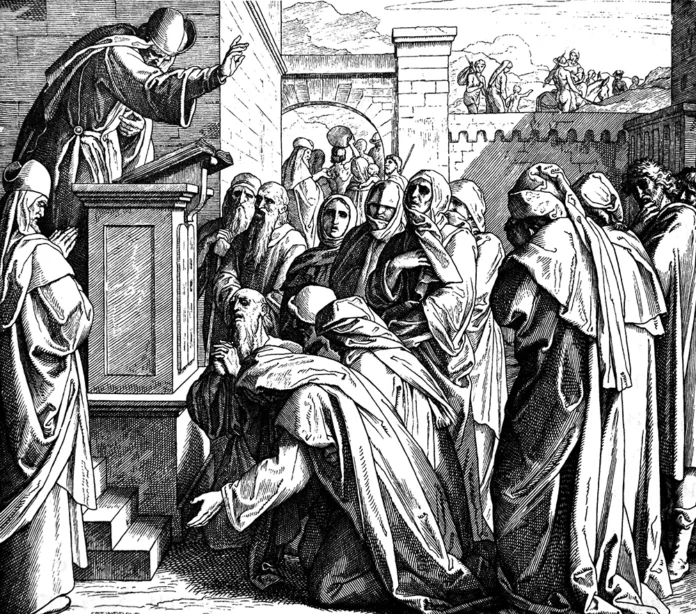As the people of Judah endured exile, God proved that He stayed with His people, and protected them. We find this particularly true in the aid that God gave Daniel, Hananiah, Azariah, Mishael, and Esther. However, after seventy years, just as had been prophesied, a group of Jews were allowed to go back to their land that had been destroyed by the Babyalonians.
Just like the manner in which they were exiled, the people of Judah return to the promised land in three waves. In the first wave, King Cyrus receives divine instruction to send the exiles back to their land. Led by Zerubbabel of the Davidic line, they come back to Jerusalem to rebuild the temple. They first rebuilt the altar of sacrifice, then the temple was completed after considerable delays. At its dedication, there was much rejoicing and celebration. Yet, amongst the elders there was much sadness. The temple did not compare to the one that Solomon had built. In addition, the previous two sanctuaries (Moses’ meeting tent and Solomon’s temple) were enveloped by a fiery glory cloud of God. At this temple’s dedication, the glory cloud of God did not return.
About sixty years after the dedication of the second temple, King Artaxerxes sends Ezra to teach the Torah and rebuild the Jewish community in Jerusalem. Ezra does so and the Torah is proclaimed yearly to remind the people to remain pure. It is here that literalism of the Torah begins to take form. The people were so scared of losing their homeland again that some began a fundamentalism surrounding commands of Torah. Ezra was particularly keen on making sure all foreigners were removed from the land, and ordered all Jews to divorce the foreigners they had married after or during the exile. Some complied, some did not.
King Artaxerxes later sends Nehemiah, his cupbearer, to rebuild the walls of Jerusalem. Artaxerxes sends with Nehemiah supplies and an armed escort. However, Nehemiah faces resistance to building of the wall because the prophet Zachariah had predicted that the new Jerusalem would have no walls. Nehemiah persists and claims that the inhabitants surrounding Jerusalem could not partake in the city and its walls. Thus Nehemiah had to build the walls under armed guard with fear of sabotage.
When all the work was completed, a great feast and rededication of the people to God occurred. The festival of booths was also celebrated. Yet, after all of the celebrations, Nehemiah finds that all of the work done has failed to reach its perfection. The Temple was poorly run, the people still broke the sabbath, and the law was broken right outside the city walls. While the people had regained their land in exile, they were falling back into the same sins of their fathers.
The return from exile was a physical one, but the people had yet to return in their hearts. The descendants of Judah still did not understand what God wanted from them and for them. As a result, the people were still in a state of waiting for the glory of Jerusalem to return. As more and more Jews returned to Jerusalem, messianic expectations grew, especially in the writing of the prophets. The people knew that God would deliver them, but they did not know when and how.






